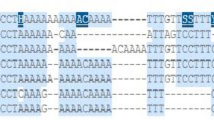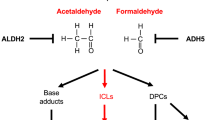Abstract
The associations of the X-ray repair cross complementing group 1 (XRCC1) gene single nucleotide polymorphisms (SNPs) Arg194Trp, Arg280His, Arg399Gln with the risk of gliomas have been studied recently, but contradictions exist whether the XRCC1 SNPs were a risk factor. We examined these associations by performing a meta-analyse. Nine studies tested the associations between XRCC1 SNPs and gliomas were retrieved. Overall odds ratios (ORs) and corresponding 95 % confidence intervals were estimated using genetic models. Heterogeneity and publication bias were evaluated. The pooled OR for Arg194Trp TT versus CC were significant, which was 2.208 (95 % CI: 1.099, 4.435; P = 0.026), but it was non-significant after removal of the studies which deviated from the Hardy–Weinberg equilibrium (HWE). The pooled OR for Arg399Gln AA+GA versus GG of genotype methods subgroup and the low study appraisal score subgroup were significant in the stratification analysis, but the meta-regression results were non-significance. No significant associations were found between the Arg280His SNPs and gliomas’ risk. There was no evidence of publication bias. We conclude that SNPs in XRCC1 are not associated with the risk of gliomas. We should do more work on the relevant variants like those in TERT, RTEL1, EGFR, CDKN2A, CCDC26, and PHLDB1 and their products rather than the XRCC1. More GWAS will also need to involve sufficiently larger study populations along with analysis of tumor or gender subtypes in order to assess these risks.




Similar content being viewed by others
Abbreviations
- ADP:
-
Poly-adenosine diphosphate-ribose polymerase
- ADPRT:
-
Adenosine diphosphate ribosyl transferase
- BER:
-
Base excision repair
- CI:
-
Confidence interval
- GWAS:
-
Genome-wide association study
- HWE:
-
Hardy–Weinberg equilibrium
- OR:
-
Odds ratios
- PCR:
-
Polymerase chain reaction
- RFLP:
-
Restriction fragment length polymorphism
- SNPs:
-
Single nucleotide polymorphisms
- XPD:
-
Eroderma pigmentosum complementary group D
- XRCC1:
-
X-ray repair cross complementing 1 gene
References
Jemal A, Siegel R, Ward E, Hao Y, Hu J, Thun MJ et al (2009) Cancer statistics. CA Cancer J Clin 59:225–249
Louis DN, Ohgaki H, Wiestler OD, Cavenee WK, Burger PC, Jouvet A, Scheeithauer BW, Kleihues P et al (2007) The 2007 WHO classification of tumors of the central nervous system. Acta Neuropathol 114:97–109
Ohgaki H, Kleihues P et al (2005) Epidemiology and etiology of gliomas. Acta Neuropathal 109:93–108
Chen P, Wiencke J, Aldape K, Kelser-Diaz A, Mike R, Kelsey K, Lee M, Liu J, Wrensch M et al (2000) Association of an ERCC1 polymorphism with adult-onset glioma. Cancer Epidemiol Biomarkers Prev 9:843–847
Wrensch M, Minn Y, Chew T, Bondy M, Berger MS et al (2002) Epidemiology of primary brain tumors: current concepts and review of the literature. Neuro Oncol 4:278–299
Campalans A, Marsin S, Nakabeppu Y et al (2005) XRCC1 interactions with multiple DNA glycosylases: a model for its recruitment to base excision repair. DNA Repair (Amst) 4(7):826–835
Siciliano MJ, Carrano AV, Thompson LH et al (1986) Assignment of a human DNA-repair gene associated with sister-chromatid exchange to chromosome 19. Mutat Res 174(4):303–308
Almeida KH, Sobol RW et al (2007) A unified view of base excision repair: lesion dependent protein complexes regulated by posttranslational modification. DNA Repair (Amst) 6(6):695–711
Caldecott KW, Aoufouchi S, Johnson P, Shall S et al (1996) XRCC1 polypeptide interacts with DNA polymerase and possibly poly (ADPribose) polymerase, and DNA ligase III is a novel molecular ‘‘nick sensor’’ in vitro. Nucleic Acids Res 24:4387–4397
Custodio AC, Almeida LO, Pinto GR et al (2011) Analysis of the polymorphisms XRCC1Arg194Trp and XRCC1Arg399Gln in gliomas. Genet Mol Res 10(2):1120–1129
Wang LE, Bondy ML, Shen H et al (2004) Polymorphisms of DNA repair genes and risk of glioma. Cancer Res 64:5560–5563
Thakkinstian A, McEvoy M, Minelli C et al (2005) Systematic review and meta-analysis of the association between b2-adrenoceptor polymorphisms and asthma: a HuGE review. Am J Epidemiol 162(3):201–211
Camargo MC, Mera R, Correa P et al (2006) Interleukin-1b and interleukin-1 receptor antagonist gene polymorphisms and gastric cancer: a meta-analysis. Cancer Epidemiol Biomarkers Prev 15(9):1674–1687
Ammarin T, Patrick M, Catherine DE et al (2005) A method for meta-analysis of molecular association studies. Stat Med 24:1291–1306
Rajaraman P, Hutchinson A, Wichner S et al (2010) DNA repair gene polymorphisms and risk of adult meningioma, glioma, and acoustic neuroma. Neuro Oncol 12(1):37–48
Martha J, Andrew F, Jane C et al (2007) DNA repair polymorphisms XRCC1 and MGMT and risk of adult gliomas. Neuroepidemiology 29:55–58
Cengiz SL, Acar H et al (2008) Deoxy-ribonucleic acid repair genes XRCC1 and XPD polymorphism and brain tumor risk. Neurosciences 13(3):227–232
Kiuru A, Lindholm C, Heinavaara S et al (2008) XRCC1 and XRCC3 variants and risk of glioma and meningioma. J Neurooncol 88:135–142
Zhou LQ, Ma Z, Shi XF et al (2011) Polymorphisms of DNA repair gene XRCC1 and risk of glioma: a case-control study in Southern China. Asian Pac J Cancer Prev 12:2547–2550
Yosunkaya E, Kucukyuruk B, Onaran I et al (2010) Glioma risk associates with polymorphisms of DNA repair genes, XRCC1 and PARP1. Br J Neurosurg 24(5):561–565
Hu XB, Feng Z, Fan YC et al (2011) Polymorphisms in DNA repair gene XRCC1 and increased genetic susceptibility to glioma. Asian Pac J Cancer Prev 12:2981–2984
Hosking L, Lumsden S, Lewis K et al (2004) Detection of genotyping errors by Hardy–Weinberg equilibrium testing. Eur J Hum Gene 12:395–399
Xu J, Turner A, Little J, Bleecker ER, Meyers DA et al (2002) Positive results in association studies are associated with departure from Hardy–Weinberg equilibrium: hint for genotyping error? Hum Genet 111:573–574
Attia J, Thakkinstian A, D’Este C et al (2003) Meta-analyses of molecular association studies: methodologic lessons for genetic epidemiology. J Clin Epidemiol 56:297–303
Schaid DJ, Jacobsen SJ (1999) Biased tests of association: comparisons of allele frequencies when departing from Hardy–Weinberg proportions. Am J Epidemiol 149:706–711
Trikalinos TA, Salanti G, Khoury MJ, Ioannidis JP (2006) Impact of violations and deviations in Hardy–Weinberg equilibrium on postulated gene-disease associations. Am J Epidemiol 163:300–309
Monaco R, Rosal R, Dolan MA et al (2007) Conformational effects of a common codon 399 polymorphism on the BRCT1 domain of the XRCC1 protein. Protein J 6(8):541–546
Odicka P, Stetina R, Polakova V et al (2007) Association of DNA repair polymorphisms with DNA repair functional outcomes in healthy human subjects. Carcinogenesis 28(3):657–664
Matullo G, Dunning AM, Guarrera S et al (2006) DNA repair polymorphisms and cancer risk in non-smokers in a cohort study. Carcinogenesis 27(5):997–1007
Masson M, Niedergang C, Schreiber V et al (1998) XRCC1 is specifically associated with poly(ADP-ribose) polymerase and negatively regulates its activity following DNA damage. Mol Cell Biol 18(6):3563–3571
Hung RJ, Hall J, Brennan P et al (2005) Genetic polymorphisms in the base excision repair pathway and cancer risk: a HuGE review. Am J Epidemiol 162(10):925–942
Caldecott KW (2003) XRCC1 and DNA strand break repair. DNA Repair (Amst) 2(9):955–969
Sanson M, Hosking FJ, Shete S (2011) Chromosome 7p11.2 (EGFR) variation influences glioma risk. Hum Mol Genet 20:2897–2904
Shete S, Hosking FJ, Robertson LB (2009) Genome-wide association study identifies five susceptibility loci for glioma. Nat Genet 41:899–904
Wrensch M, Jenkins RB, Chang JS (2009) Variants in the CDKN2B and RTEL1 regions are associated with high-grade glioma susceptibility. Nat Genet 41:905–908
Ala-Korpela M, Kangas AJ, Inouye M (2011) Genome-wide association studies and systems biology: together at last. Trends Genet 27(12):493–498
Evangelou E et al (2009) Large-scale analysis of association between GDF5 and FRZB variants and osteoarthritis of the hip, knee, and hand. Arthr Rheum 60:1710–1721
Kerkhof HJ et al (2010) A genome-wide association study identifies an osteoarthritis susceptibility locus on chromosome 7q22. Arthr Rheum 62:499–510
Rajaraman P et al (2012) Genome-wide association study of glioma and meta-analysis. Hum Genet. doi:10.1007/s00439-012-1212-0
Acknowledgments
We would like to express our great gratitude to Professor Ali Khonsary, Department of Veterans Affairs Medical Center, West Los Angeles, U.S.A, for his helpful edition and critically comments.
Conflict of interest
Research reported in this article received no funding and We declare that we have no financial and personal relationships with other people or organizations that can inappropriately influence our work, there is no professional or other personal interest of any nature or kind in any product, service and/or company that could be construed as influencing the review of the manuscript.
Author information
Authors and Affiliations
Corresponding author
Electronic supplementary material
Below is the link to the electronic supplementary material.
Rights and permissions
About this article
Cite this article
Li, M., Zhou, Q., Tu, C. et al. A meta-analysis of an association between the XRCC1 polymorphisms and gliomas risk. J Neurooncol 111, 221–228 (2013). https://doi.org/10.1007/s11060-012-1022-1
Received:
Accepted:
Published:
Issue Date:
DOI: https://doi.org/10.1007/s11060-012-1022-1




